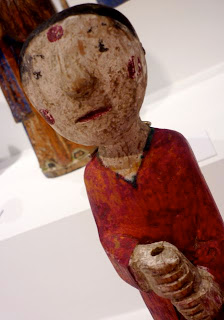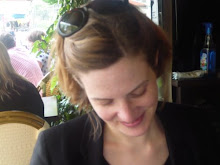



A collection of small Korean funerary figures, or
Kkoktu, were on display at the UCLA's magical
Fowler museum, where I went to meet them. Here is how the catalog describes them:
Koreans have a tradition of creating charming and festively painted wooden dolls. But rather than being placed in a toy box, these joyful figurines of clowns, tigers and acrobats adorn coffins. Their costumes and poses reflect the realities of rural Korean village life. Though the kkoktus’ gaiety seems incongruous with mourning, they express a culture’s deep desire that the dead enter the next world surrounded by joy — and its appreciation of the fleeting nature of all experience.Korea is very present here in Los Angeles, and though I must admit I am no fan of kimchi, I want to absorb more of this culture - for instance with a visit to the local Korean spas, famous for their Akasuri scrubs and exotic baths.
Suggestions, anyone?































 Emily Dickinson
Emily Dickinson




 Take the Quiz here!
Take the Quiz here!